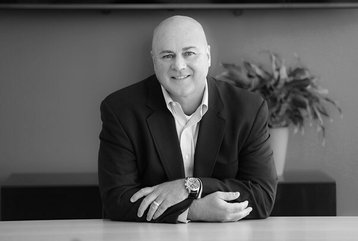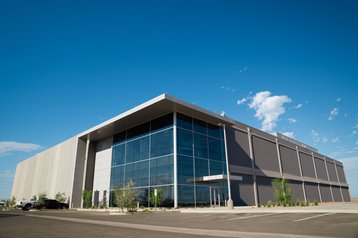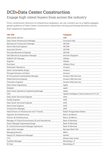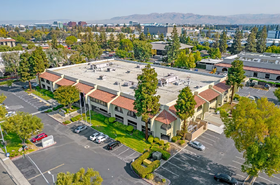EdgeCore CEO Lee Kestler wouldn't want you to think his company is exciting.
"We're not an innovation company, some pretend to be. We are not. We are a real estate developer. We are very focused, we're deliberate and intentional with what we're doing. We have very ruthless prioritization.”
EdgeCore was founded in 2018 with a plan to build wholesale data centers for the largest data center companies. “We're looking to acquire land parcels and operate at the intersection of energy and networks,” Kestler said.
This feature appeared in Issue 52 of the DCD Magazine. Read it for free today.
The company has styled itself after DuPont Fabros, which was acquired a year before EdgeCore’s founding by Digital Realty for $8 billion - ending a decade-long run as a huge wholesale data center operator.
In late 2022, EdgeCore was itself acquired by Swiss investment firm Partners Group with a plan to double down on that strategy, backed by a $1.2 billion war chest. The operator has also secured more than $2bn in green loans to fund its build-out.
Kestler was brought in alongside the Partners acquisition with a clear mandate to build his own DuPont - something he had prior form for, after spending more than eight years at that company.
"When I joined DuPont Fabros, we were one of the early pioneers of wholesale, large-scale, energy-efficient data centers," he recalled. "And that turned out very well for us. The industry has just exploded since."
Between his lengthy run at DuPont, and his past year at EdgeCore, Kestler had two other roles that he believes will deeply inform how he hopes to build the company.
The first was at Vantage, where - as chief commercial officer - he helped the data center firm grow with private equity backing. "It was in a very similar spot to where EdgeCore is now," he said.
The second job may end up proving more useful for the inflection point that the sector now faces. "When I left Vantage [in 2021], I intentionally retired from the data center sector," he said.
Instead, Kestler moved over to the utility space, spending a year at energy developer NextEra. "I now understand renewables, hydrogen, battery storage, and a lot about EV charging," he said. "I understand what it means to sit with somebody at the utility level, and I can understand exactly what's going on."
This, he hopes, will give his company an edge in finding reliable power at a time when the grid is increasingly constrained and data centers are increasingly power-hungry. "We are going to be 300MVA or bigger. It's not like you need 30MW anymore."
To adapt to the bigger and denser realities of today, EdgeCore has rolled out a new data center design based on 12MW blocks and 36MW floor plates. "They're pretty capable, and are still using air-cooled chillers," he said. "We are not going to use a lot of water. We're not developing evaporative chilled water plants in our designs."
The market's demands for liquid cooling may change, however, so EdgeCore is pre-installing support at the mechanical level so that it is easier to upgrade in the future.
While the company is looking for places to support large-scale developments, it will build at those sites in increments. "I could build a 144MW building across four stories, but I may only take up two floors to start," he said. "It may be seven or eight years before the rest of it gets filled. And that's okay."
Hyperscalers are already talking about infrastructure eight years ahead, he said, making planning for the long run in a period of AI-fueled potentially short-term excess possible.
"We think we understand where the puck is going," Kestler said. "This industry is not short for self promotion on what's happening. I mean, come on, let's get real. Everybody talks about Ohio and Salt Lake in the Pacific Northwest. Atlanta is getting a lot of attention, and Texas."
But "there's not enough money for any of us to go out and buy land at all those locations. So you pick your spot, and then you work to monetize the vision."
Over the next decade, Kestler believes that "a wave of these 300+ MVA type deployments are necessary because of the constraints in the utility market, the needs for future planning of that capacity," he explained.
"And it's proven - when we started DuPont Fabros, that was the first time you ever saw something more than 30MW in a building. Everybody thought we were nuts. This industry pushes itself to a point where success is always teetering with failure."
The market is now much larger than the days of DuPont, which means a much greater opportunity for success. “We will have three to five new markets in the next three years,” Kestler said, “with 300MVA plus campuses.”
“The market is not going to go away; AI is not a sugar rush. The development cycle for all of these types of projects is 36 to 48 months out.”
At the same time, hyperscalers are ramping up their own data center build-outs. “But they need help - and they've said that. So I feel good about it.”







